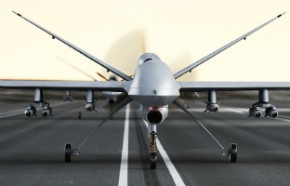Drones unlimited? Just war rules demand accountability
Does the use of drones meet just war criteria? That depends on how you define your terms.

In a move that appeared carefully calculated to tamp down criticism while escaping further scrutiny, the Obama administration in July released a report on the aerial drone strikes that have occurred outside “areas of active hostilities” between January 2009 and December 2015. In other words, the report tallied the number of drone attacks and resultant deaths in places other than Afghanistan, Iraq, and Syria.
Assessing the justice of any given war or act of war, including drone strikes, depends upon the framework used. The core of the just war tradition is that acts of violence can be justified if they meet certain criteria, such as that they are used for a just cause and by a lawful authority. Among the standard just war criteria is that the use of violence must be “discriminate,” that is, it must distinguish between combatants and noncombatants and target only the former.
If one were to judge solely from the summary offered by the Office of the Director of National Intelligence—which recorded 473 drone strikes resulting in somewhere between 2,371 and 2,581 combatant casualties and from 64 to 116 civilian casualties—the drone program might appear to be performing adequately. As the report acknowledges, however, this estimate of civilian casualties is well below even the most conservative estimates of outside observers.




